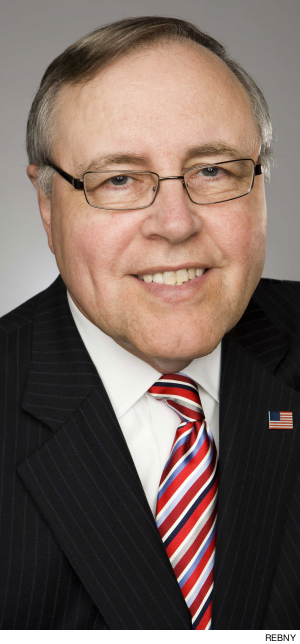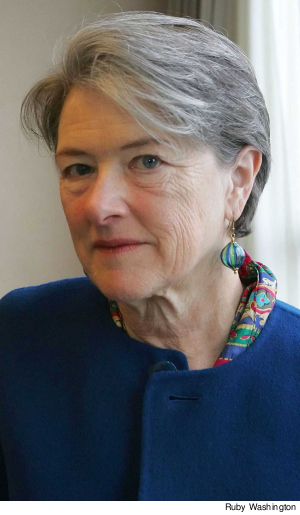Months before Andrew Cuomo proposed his 2011 budget – or was even elected New York State’s governor – a small group of New York power brokers began organizing a business coalition that would support Cuomo’s efforts to balance the state’s budget through spending cuts that target public service and public workers. The group was organized at the urging of Cuomo after a series of meetings with corporate leaders in the spring and summer of 2010.
The “Committee to Save New York,” as the organization came to be known, has since assembled a $10 million war chest to fund a television ad campaign, canvassing, and other organizing efforts in support of Cuomo’s austerity budget and its tax cuts for the rich. Its core founders represent some of New York’s wealthiest and most powerful residents: bank CEOs, billionaire real estate developers, media moguls and hedge fund managers.
CULTURE OF SECRECY
 |
In its short history, the Committee to Save New York has gained a reputation for secrecy. It declined to disclose the names of all of its board members until January 16, after the lack of a list began to draw unfavorable press attention. Though organized specifically to work for passage of Cuomo’s budget proposals, it avoided registering as a lobbyist until late January, a delay that was criticized by good-government groups.
The Committee still refuses to disclose most of its donors. “We don’t have to report it, so why tell you?” board member Steven Spinola told The New York Times.
Spinola is president of the Real Estate Board of New York (REBNY), which played a central role in founding the Committee. Real estate developer and former REBNY chair Larry Silverstein offered an illuminating take on what REBNY is and what it stands for in a 1986 profile in the Times: “Our membership list and the Forbes 400 wealthiest individuals in the United States have an enormous commonality…. By virtue of our holdings, the board has the most intense interest in the well-being of the city – we recognize that our fortunes are inexorably tied to the fortunes of the city.”
CORPORATE INTERESTS
The Committee to Save New York is just the latest expression of REBNY’s “intense interest” in New York’s economic health, and its apparent belief that the interests of billionaire real estate developers and the public interest are neatly aligned. Silverstein himself has donated to the Committee, and REBNY president Spinola, chair Mary Ann Tighe, and executive committee member Rob Speyer all sit on the Committee’s board. Speyer is Co-CEO of Tishman Speyer, the giant real estate firm that is Cuomo’s top campaign donor and the top donor to the Committee, to which it gave $1 million. Tishman Speyer formed the investment team that bought Stuyvesant Town for $5.4 billion, drew sharp criticism from tenants for poor stewardship of the property, and then defaulted on its loans in early 2010.
 |
Another key group in the Committee is the Partnership for New York City, which describes itself as “a select group of 200 CEOs from New York City’s top corporate, investment and entrepreneurial firms.” Partnership CEO Kathryn Wylde, a Committee to Save New York board member, is frequently credited as one of the movers and shakers who organized the Committee at Cuomo’s behest.
The word “partnership” somewhat obscures just who is joining hands in collaboration: bank CEOs such as JP Morgan Chase’s Jamie Dimon and Goldman Sachs’s CEO Lloyd Blankfein, private equity and hedge fund managers such as Henry Kravis and John Paulson, News Corporation CEO Rupert Murdoch, American Express CEO Kenneth Chenault, and other members of New York City’s monied elite. Founded by David Rockefeller in 1979, the Partnership for New York City’s board is largely drawn from Wall Street and is packed with billionaires, including 11 members from Forbes’ 400 Richest Americans list for 2010. Despite cultivating an image as a sort of good-government group, the Partnership has been a reliable guardian of corporate interests, on issues from paid sick leave for workers to tax cuts for the rich.
UNION PRESSURE
Also credited in founding the Committee to Save New York are the Business Council of New York State and its CEO, Ken Adams. The Business Council brings together business interests from both New York City and upstate. Governor Cuomo has since nominated Adams as CEO of the Empire State Development Corp., the state’s economic development arm, further illustrating the close ties between the governor and the Committee. The Business Council’s acting head, Heather Briccetti, has since replaced Adams on the Committee’s board.
One early member of the Committee’s board, Citigroup Chairman Richard Parsons, resigned in the wake of union pressure. The New York Times reported that at least one public-employee union had informed Parsons that if he remained on the board, unions would mount a publicity campaign contrasting the billions Citigroup received in bailout money with Cuomo’s proposed cuts in services and worker benefits, a scenario the Times described as “a public relations nightmare.”
Most of the Committee’s other board members represent Chambers of Commerce from around New York State. The group’s honorary chair is Felix Rohatyn, the Lazard Frères investment banker known for managing the imposition of austerity in New York City’s 1975 fiscal crisis. Other board members include Carl McCall, the former New York State comptroller who has a long history in the financial industry, and Gary LaBarbera, president of the Building and Construction Trades Council of Greater New York.
OUT OF TOUCH
LaBarbera’s decision to join the board was considered a coup for Cuomo, providing a fig leaf of backing from beyond the state’s business community and sparking some tensions with other unions.
The Committee to Save New York tries to project a “big tent” image, with photos of construction workers in its promotional materials, and a TV ad that features average New Yorkers advocating for tax cuts. But if the Committee is a tent, its center poles are REBNY, the Partnership for New York City, and, to a lesser extent, the Business Council, which appears to provide the bulk of the group’s funding and organizational support.
The money moving the Committee’s message is drawn from the bank accounts of people like donor Stephen Ross, who is number 101 on Forbes’s Richest Americans list, CEO of the real estate firm the Related Companies, and also a major ($35,000) donor to the Cuomo campaign. The backers of the Committee to Save New York are not generally people who take the subway to work, attend CUNY, use Medicaid or send their kids to public schools – so it is not surprising that they would back an agenda of slashing public services to pay for tax cuts for New York’s wealthiest.
BUYING FAVOR
Wisconsin Governor Scott Walker, who has moved to strip public employees of collective bargaining rights, recently received a great deal of media attention for taking a call from a Buffalo blogger posing as right-wing billionaire David Koch. Koch had given $43,000 to Walker’s campaign, and the Washington Post’s Ezra Klein wrote that the call showed “the access and power that major corporations and wealthy contributors will have in a Walker administration.” But Koch gave even more money to Cuomo than he gave to Walker – $50,000, plus another $37,000 that Cuomo received from Koch’s wife, Julia.
No state governor seeking budget cuts, including Walker, enjoys the level of public support from billionaires that Cuomo is getting from the Committee to Save New York. The Committee may evaporate in the wake of this year’s budget battle, but the political alliance it represents will have profound consequences for New Yorkers in the years ahead.
__________________
Kevin Connor is co-director of the Public Accountability Initiative, a non-profit, non-partisan research organization on corporate and government accountability, and co-founder of LittleSis.org, an “involuntary Facebook of powerful people” edited by a community of volunteers. He is lead author of a detailed study, “The Committee to Scam NY” (see tinyurl.com/NYscam). For more budget-related coverage in Clarion, click here and here.

